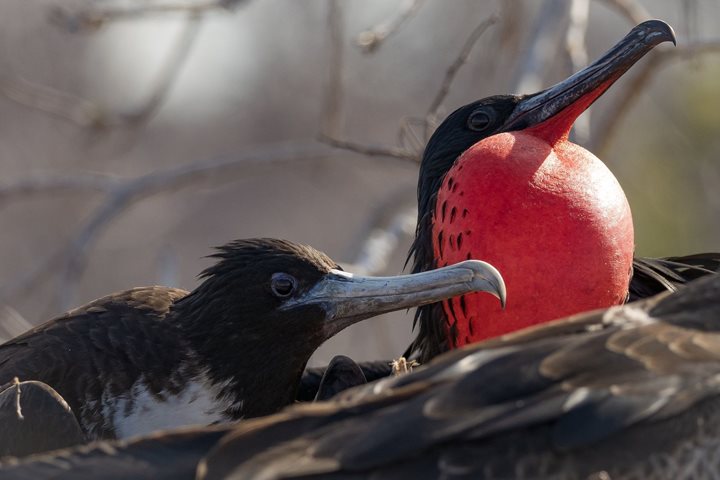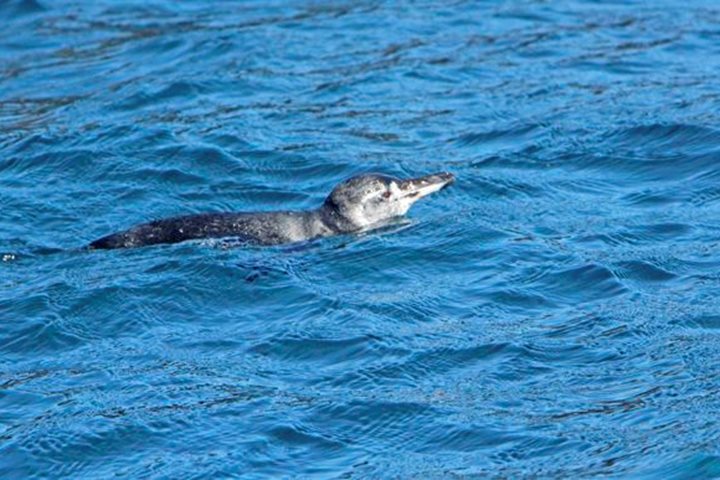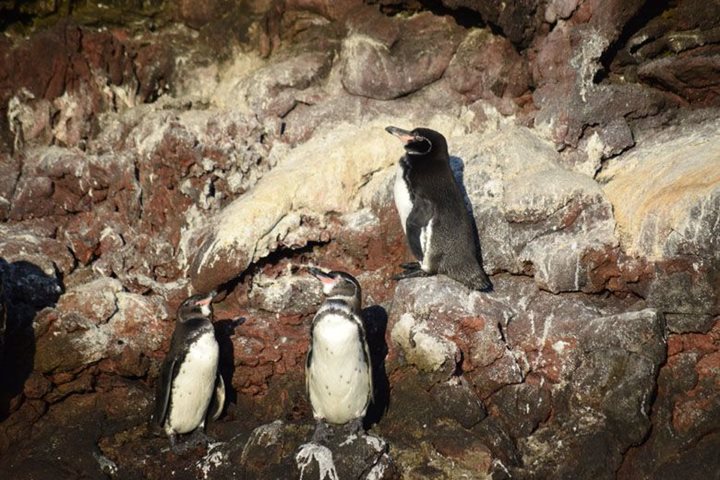We woke up early and started our visit at 6:30. It was a bit cloudy today, and we could feel already the presence of the cool trade winds reaching the Galapagos Islands together with the arrival of the cool Humboldt Current. Floreana is located on the southern part of the archipelago, to the west of Española Island. It is of volcanic origin, with several cinder and spatter cones on which the vegetation of the last rainy season has grown, making the landscape the most beautiful of the islands.
Today we explored two visitor sites: Cormorant Point and Post Office Bay. This island is also inhabited with about 150 residents who live in Velasco Ibarra Port. It is the only island from the four inhabited ones that has a solar energy plant to produce electricity.
Punta Cormorant has a green sandy beach due to the abundance of green olivine crystals, a material that comes out from the volcanic cones. Our guests took many pictures to capture the unusual coloration caused by this precious crystal.
Behind this olivine volcanic beach, we walked to a lagoon which is the nesting site for a small colony of greater Galapagos flamingos. Flamingos feed on a lagoon shrimp, artemia salina, from which the adults obtain their pinkish coloration on their feathers. Our guests really enjoyed this serene and unique place. The lagoon divides the beach into two different colors: the volcanic green beach, to the coralline nesting area of the green Pacific sea turtles. For everybody it was a surprise to see the flamingos incubating on the lava rock, where they build their nests with mud collected from the laggon.
In the afternoon we visited Post Office Bay, a historic site where a British captain whose name was James Colnett erected a wooden barrel in 1793, to use as an ancient postal system. So far it is the oldest post office in South America. Our guests deliver their post cards and collected some that were left by previous visitors, to hand deliver when they return home. This continues the pirates’ tradition of 1793.







